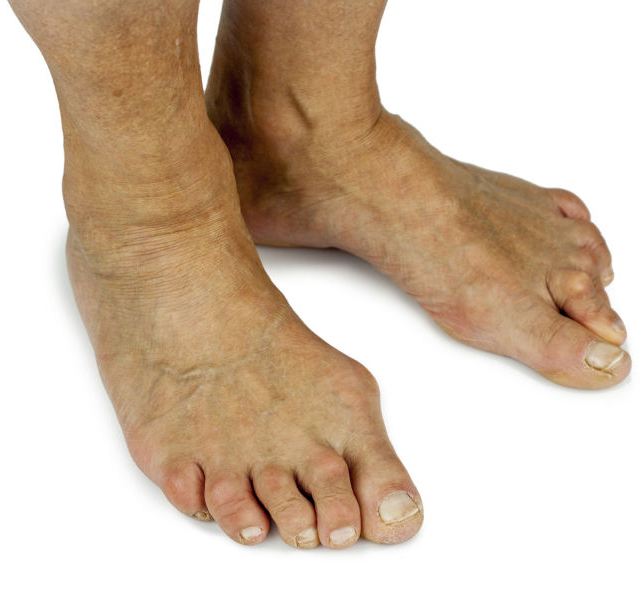Hammer/Claw Toes
These may occur in isolation or may affected multiple toes involving both feet (see below picture). People afflicted with claw toes commonly experience corns and callouses to the tips and dorsum (top) of the toes and to the plantar (bottom) of the forefoot. In severe cases the fat pad which protects the joints of the plantar forefoot (lesser metatarsophalangeal joints) is displaced distally (ie- shift towards to toes and off the joints) leaving them exposed and painful. Patient with rheumatoid arthritis and diabetes have a higher incidence of claw/hammer toes.
Hammer toes can be treated in many cases without surgery depending upon the severity of the complaint. Primary foot care can be used to address corns and callouses and thickened/ingrowing toe nails associated with hammer/claw toes. Foot orthoses can be used to reduce pressure to the plantar forefoot (ball of the foot). This pressure is commonly associated with hammer/claw toe formation often caused by an acute or progressive tear of the plantar plate. Shoes can be used to accommodate hammer/claw toes and reduce pressure from the top of the lesser toes. Medications can be a useful compliment to these measures.
Surgery can be used to straighten toes, eliminate corns and callous associated with them and reduce pain. The straightening of toes is important in the diabetic and rheumatoid patient as they will be more susceptible to infection because of localised tissue trauma and potential ulceration. Once the protective layer of skin is breached a portal of entry is provided to bacteria leading cellulitis (soft tissue infection) and/or osteomyelitis (bone infection).
Digital surgery (corrective toe surgery) is complex and many techniques exist to straighten toes. Such techniques can be discussed with our practitioners.

Hammer toes are commonly caused by progressive or acute rupture of the plantar plate (video three). There are a number of surgical methods used to correct claw/hammer toe deformities (video four). Please click below to see an explanation of the plantar plate rupture and to see a simple example of a hammer toe corrective procedure.
Suite 8 (Ground Floor), 146 Scollay St, Greenway ACT 2900
6287 4889
6293 2325
[email protected]
ACT Podiatry : Advanced Foot & Ankle Centre
Canberra Podiatric Surgeon
Suites 16-17 (First floor) 14-16 Brierly St, Weston ACT 2611
6287 2818
6293 2325
[email protected]
ACT Podiatry : Advanced Foot & Ankle Centre
Canberra Podiatric Surgeon
Copyright © 2018, ACT PODIATRY | SEO by High Jump Digital

